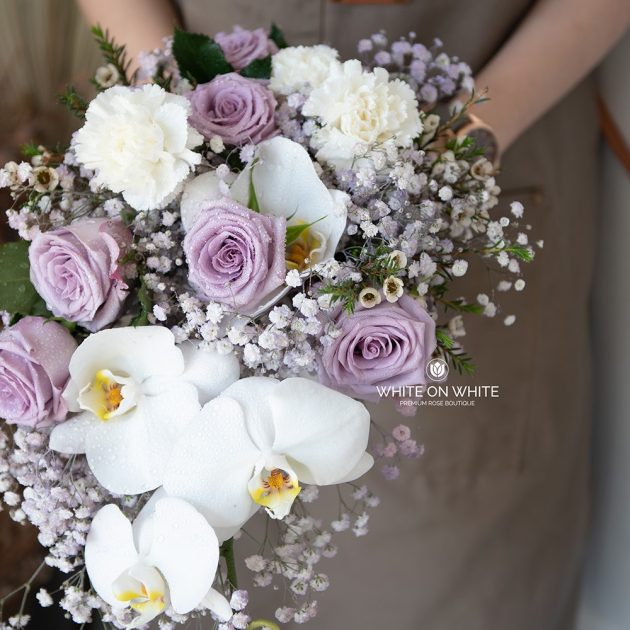Florist’s Chronicle: Penang’s Blooming History

Introduction
In the heart of Malaysia, where the colonial charm of George Town meets the lush landscapes of Penang, there exists a unique chronicle—a floral narrative that transcends time. This is the Florist Chronicle, an exploration of Penang’s blooming history through the hands of caretakers who have witnessed the island’s evolution. Join us on an immersive journey through the annals of time, where every bloom becomes a page, and every petal tells a story of Penang’s enduring connection with nature, culture, and the artistry of floristry.
Chapter One: Roots of Blossoming Beauty
As dawn breaks over Penang, the Penang Florist steps into the streets armed with shears and a deep appreciation for the island’s botanical legacy. The roots of Penang’s blossoming beauty extend back through centuries, intertwining with the arrival of colonial powers and the cultivation of exotic plants brought from distant lands.
Wandering through the historic streets, the Florist’s hands become the storytellers of the roots of Penang’s floral heritage. From the fragrant spice gardens cultivated by early settlers to the introduction of ornamental blooms by colonial botanists, each petal bears witness to the island’s diverse botanical lineage. The Florist, as a guardian of history, humanizes the roots of Penang’s blossoms, ensuring that the stories embedded in the soil are not forgotten.
Chapter Two: Colonial Elegance in Bloom
The Florist’s Chronicle delves into a chapter adorned with colonial elegance—a period when Penang’s gardens transformed into showcases of botanical opulence. Orchids, roses, and bougainvillea became the symbols of status, and the island’s landscapes echoed the sophistication of colonial society.
In the botanical gardens, the Florist’s hands recreate the colonial-era elegance, orchestrating arrangements that pay homage to the island’s blooming past. Visitors wander through landscapes reminiscent of a bygone era, experiencing the grandeur of the Florist’s interpretations. The Florist, as a custodian of heritage, humanizes the colonial legacy, allowing the echoes of elegance to resonate through the petals of time.
Chapter Three: The Dance of Independence
As Penang embraced independence, the Florist’s Chronicle reflects a chapter marked by a dance of vibrancy and newfound identity. The island’s gardens bloomed with a renewed sense of freedom, mirroring the spirit of a nation forging its path forward. Local flora took center stage, celebrating the resilience and diversity of Penang’s natural bounty.
In the streets adorned with Merdeka blooms, the Florist’s hands become the choreographers of a dance that symbolizes independence. Hibiscus, the national flower, intertwines with indigenous blossoms, creating arrangements that tell the tale of a nation in bloom. The Florist, as a celebrant of freedom, humanizes the dance of independence, ensuring that the petals carry the stories of resilience and identity.
Chapter Four: Cultural Bouquets in Full Bloom
In the heart of Penang’s Floral Chronicle, cultural bouquets burst into full bloom—a chapter where the Florist becomes a cultural custodian, weaving traditions into the island’s narrative. Festivals like Thaipusam and Chinese New Year see the Florist adorning spaces with vibrant cultural symbols, creating visual narratives that transcend generations.
Through the Florist’s hands, cultural nuances are translated into the language of flowers. The streets of George Town become a living canvas where cultural bouquets tell tales of unity in diversity. The Florist, as a guardian of culture, humanizes the island’s traditions, ensuring that each bloom is not merely an arrangement but a living expression of Penang’s rich tapestry.
Chapter Five: Sustaining the Floral Legacy
As the Florist’s Chronicle reaches its contemporary chapters, the focus turns to sustaining the floral legacy. Beyond daily arrangements, the Florist takes on the role of a guardian, advocating for sustainability, conservation, and community engagement. Educational initiatives and collaborations with local communities become integral to the Florist’s mission, ensuring that Penang’s blooming history is not confined to the pages of the past.
Through workshops, exhibitions, and cultural exchanges, the Florist becomes a facilitator of dialogue, using the universal language of flowers to bridge gaps and foster connections. The Florist’s Chronicle extends beyond the physical arrangements to cultivate a mindset—a mindset that embraces the interconnectedness of all living things and the beauty that blooms when communities collaborate to nurture their floral heritage.
Conclusion
Penang’s Blooming History, as chronicled by the hands of the Florist, is more than a journey through time; it is a celebration of life, culture, and the enduring beauty of the island. As you wander through the streets adorned with floral arrangements, remember that each bloom is a chapter, each petal a verse, and every fragrance a part of the ongoing chronicle of Penang’s blossoms. The Florist’s humanized touch elevates the act of arranging flowers into an art form—a celebration of history that echoes through the island’s botanical tapestry. In the Florist’s Chronicle, Penang’s blooming history is not just a collection of events; it’s a living expression of the island’s connection with nature, culture, and the beauty that unfolds in the delicate dance of petals across time.




